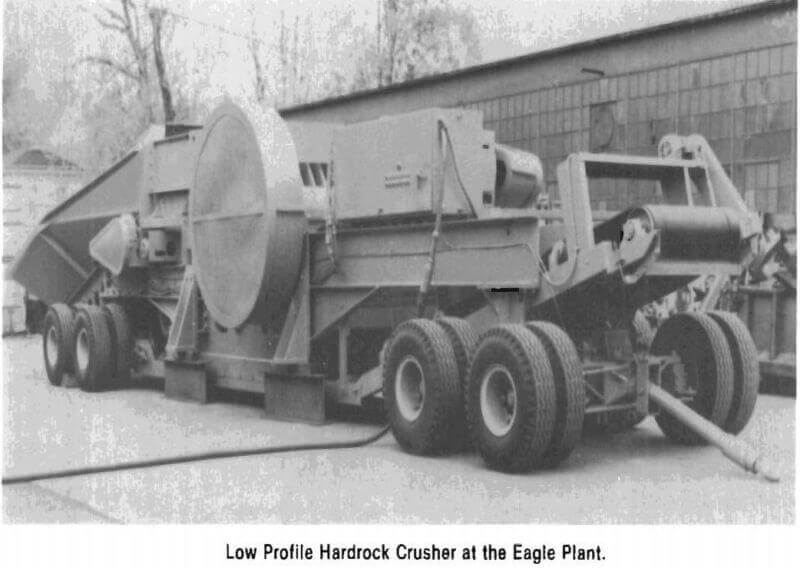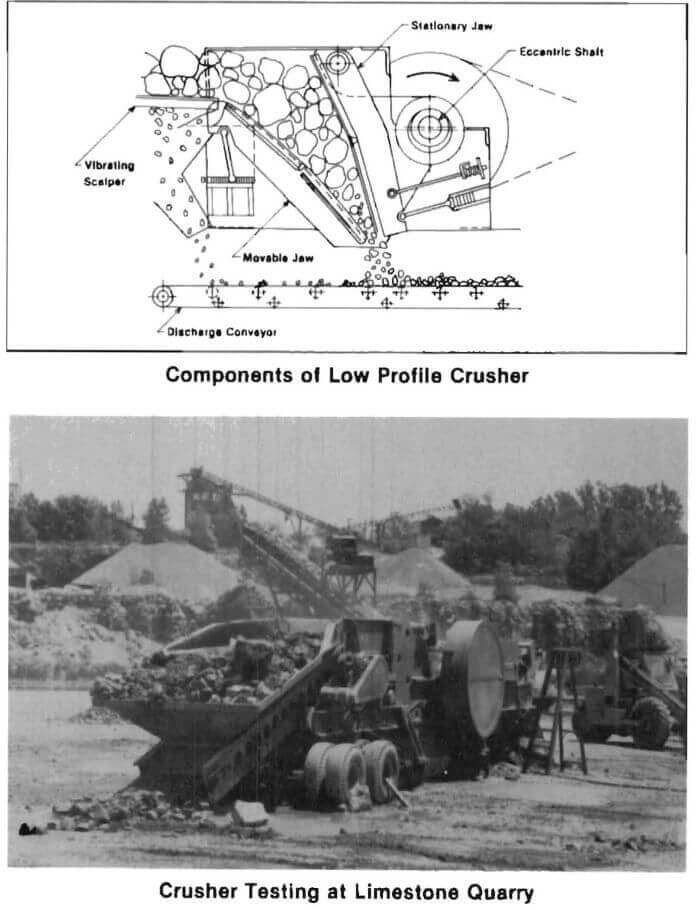Table of Contents
This Mobile Rock Crusher provides a portable crushing capability to keep conveyor haulage close to the working face and permit more efficient and safer ore handling in low headroom, hardrock mines. A readily portable jaw crusher is used which meets machine size, feed rock size, product size, and throughput requirements for low headroom, hardrock mines.
How It Works
The Crusher is mounted on wheels to expedite frequent moves and to allow crushing of mined rock or ore near the working face. The crushed product is then placed on conveyor belts that are extended as the crusher is moved. Keeping crushing and conveyor haulage near the face minimizes the haulage distances for trucks and loaders. Loading and haulage of run-of-mine ore is frequently the highest operational cost in underground mines. These costs can be significantly reduced by use of a belt conveyor, which is a common practice in coal and other soft mineral mines. The new low- profile hardrock crusher gives the same advantage of extensive belt haulage capabilities to low headroom, hardrock mines.
The low-profile crusher will accept feed up to 30 inches when operating under 11 feet of headroom. The headroom required for crusher operation was reduced by tilting the jaws, feeding the crusher horizontally, and placing the eccentric shaft at the back or in a horizontal plane with the jaws. Material is fed by an apron feeder to the vibrating scalper where undersized pieces are bypassed to the discharge conveyor. The moving lower jaw helps convey the oversize pieces into the crushing chamber.

Discharge settings can be adjusted for a product size of 4 to 8 inches. The jaw opening is 36 by 40 inches. Depending on the settings, the crusher system has a throughput capacity of 200- to 300-tons/hr. Electric power requirements are 125-hp for the crusher alone and 150-hp total for the feeder, scalper, crusher, and discharge conveyor. For increased maneuverability of the unit when towing, a fifth-wheel plate and kingpin are incorporated in the design.
Test Results
Following construction of the crusher, shakedown testing, and necessary modifications, short duration tests at the manufacturer’s plant demonstrated crusher capabilities. The crusher reduced chunks, ranging up to 3 feet, of copper ore, taconite, limestone, and traprock to a 4-inch discharge size at an estimated rate of 250-tons/hr. The compressive strength of the traprock was about 32,000 psi.
Following the successful in-plant tests, the crusher was field tested. Over 10,000 tons of hard limestone were crushed during the run. Feed, with boulders up to 3 feet were reduced to a 4- or 6-inch product size. Throughput capacity at 4 inches was in the 175 to 225 tph range and at 6 inches in the 250 to 400 tph range. The material crushed has a compressive strength over 30,000 psi. Successful surface testing demonstrated that the crusher is ready for the next step—an underground production run.
 The crusher system was developed and tested by Eagle Crusher Co., Inc. under a Bureau of Mines contract. Sam G. Demou is the Bureau’s Technical Project Officer, and Harold J. Miller is the contractor’s Senior Design Engineer on the project.
The crusher system was developed and tested by Eagle Crusher Co., Inc. under a Bureau of Mines contract. Sam G. Demou is the Bureau’s Technical Project Officer, and Harold J. Miller is the contractor’s Senior Design Engineer on the project.
Patent Status
A patent application on this development has been filed with the United States Patent Office by Eagle Crusher Co., Inc.
